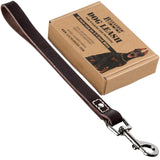Preparing for an emergency like a fire, a flood, a tornado, or anything similar is never a joyous thing to do. Yet, it’s necessary – even if we are lucky enough to never encounter any natural disasters, the peace of mind that comes from preparation is a reward in and of itself.
You already know how to prepare for many possible disaster scenarios and what to do for yourself and your family. What should you do as a dog owner? Preparing for an emergency with a pet is an extra challenging process because you need to make more decisions regarding another family member who may or may not cooperate as well as people in your home.
Below are some of the important things you must do to prepare your dog for an emergency:
Get an emergency supply kit ready
Just as you would for a human member of the family, there are several key supplies that you would need to pack for your dog in case of an emergency. We’d like to think that in those cases we’d just grab everything in a matter of seconds, but when you count how much “everything” is, this is clearly not an option. It’s best to prepare a lightweight emergency kit for your pet and store it in an easily accessible place, preferably close to the front door or wherever you keep your own first aid kits. Make sure to check it regularly to see if the supplies in there are up to date.
For your own kit, RedCross.org has a comprehensive list of ideas. But for pet owners, there are additional things that must be considered. Your pet’s emergency kit may include the following:
- Food. You don’t know when and how you’ll be able to get dog food in a case of an emergency like a natural disaster. Canned dog food will keep for very long periods of time, so make sure to pack at least 3 – 7 days’ worth of food.
- Can opener. An item you can often forget, a can opener will be of immense help if you’ve packed canned food for your dog (and for yourself). Make sure it’s a manual can opener rather than anything that works on batteries.
- Dishes. In an emergency you can obviously pour your dog’s food on the ground or the floor of wherever you are, but it will be more convenient for both you and your dog if you have a collapsible dog bowl. They are designed for hiking and travel and are very easy to store.
- Water. Store at least 3-5 days’ worth of water for your pets in addition to your own.
- Medicines and medical records. In a waterproof container, keep a set of your pet’s essential medicines, and a copy of his medical records. If you need to visit a vet in another state or country, you will need all the veterinary and vaccination information.
- First aid kit. As you would do for yourself, pack a small first aid kit for your dog in another waterproof bag. Consult with the dog’s vet as to what exactly to pack. The basics are: cotton bandage rolls, bandage tape and scissors, antibiotic ointment, flea and tick prevention; latex gloves, isopropyl alcohol and saline solution.
- Your dog’s essentials. This like your dog’s collar with an ID tag, a harness and a leash can be useful. Pet ID is always a must, let alone in an emergency. Also prepare a second pack of copies of your pet’s registration information, adoption papers, vaccination documents and medical records in a clean plastic bag or waterproof container and add them to your kit. Consider micro-chipping, and enrolling your dog in a recovery database.
- Dog crate or carrier. You likely don’t need a separate one, but keep in mind that a carrier or travel-friendly dog crate can become useful in emergencies. Dogs can panic in these situations and can easily become unmanageable. Crating will make the emergency evacuation much easier for both you and your pet. Even if you have a medium to big sized dog, consider getting a portable and foldable pet cage which you can stretch in the open if you need to spend the night somewhere and want to protect your dog.
- Sanitation. An always unpleasant but always important thing to consider is the sanitation supplies. Dogs may not need litter boxes, but you still need to prepare plastic trash bags, paper towels, a disinfectant, and anything else you may consider essential.
- Toys. As dogs can become increasingly stressed during an emergency, several familiar and beloved dog toys and items, or even something like a dog bed, can drastically reduce the stress of your pet. And the calmer your dog is, the easier the evacuation will be.
- A picture of your dog. Should you and your four-legged friend get separated, a picture of your dog with some detailed information about the dog, your contact details can be a life saver and help reunite you and your Fido.
Prepare an evacuation plan
Should an emergency arise, you need to know beforehand what your best course of action would be. The government website Ready.gov has all the basic details, but pet owners should also consider the following things:
- How to act in a case of an emergency to safely get yourself, your dog and the rest of your family to safety as soon as possible and with all emergency provisions.
- Where would you go in a case of an emergency? A close relative or a friend? Someone further away, in case the emergency has engulfed the entire town/city? A shelter? Consider if the shelter is pet-friendly. A lot of emergency shelters don’t accept pets so you could just waste precious time and efforts trying to get to one just to be turned down.
- Discuss an eventual emergency evacuation with your veterinarian. He or she can have important insights about evacuation with pets in your particular town or city.
- Gather info about all big and/or good emergency animal treatment facilities in the area. You don’t want to have to research something like that in a case of an emergency.
Stay informed about any potential emergencies
From meteorological disasters to any social cataclysm, you always need to be a step ahead of the situation, particularly if you are traveling with a dog as the dog is not just an extra family member, but one that is rather difficult to manage in an emergency. Keep up to date, especially if you expect a disaster like hurricanes we’ve recently seen to happen and have your plan ready.
The Internet is a great way to stay up to date, but there are also Emergency Alert System (EAS) notifications that are delivered on TV, over the radio, and even through your smartphone. Wireless Emergency Alerts (WEAs) are another way to get updated on emergencies – those look like text messages but with a unique sound and vibration (similar to AMBER alert).
|
|


















